Milkweed care and growing guide: expert tips for these butterfly favorites
Introduce these insect-friendly plants to your backyard by learning how to grow milkweed, the nectar-rich darling of North America
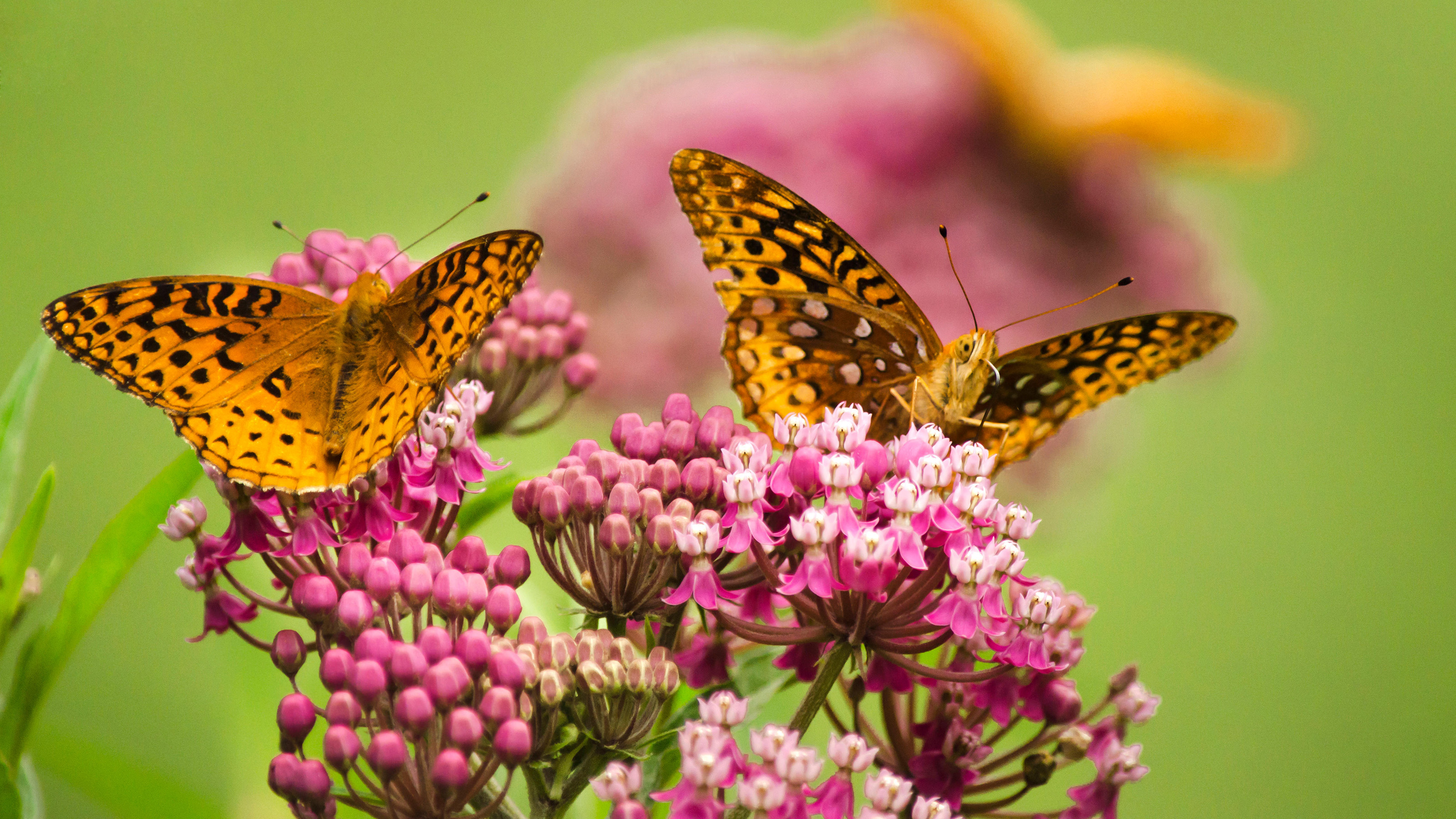

Learn how to grow milkweed to make your backyard a butterfly haven. Belonging to the plant genus Asclepias, the milkweeds are a large tribe of around 100 species, so-called because when damaged, they exude a milky sap. Many originate from North America where they grow as prairie perennials, that die back for winter and grow again in spring.
The common milkweed (Asclepias syriaca) is widespread on the eastern side of the country, and often seen thriving on roadsides. Said to be as complex as those of orchids, the intricate flower structures of milkweeds consist of curved back petals below a 'corona', or crown, of flower parts including glands holding pollen sacs or pollinia. These are picked up by visiting insects and deposited on other flowers.
The main motive for growing milkweed is not their structural, nectar-rich flowers, or the green seed pods that follow, though both are valued as cut stems for vases. They are inextricably linked with Monarch butterflies, whose famous migratory habits take them 2,800 miles, from Canada and the USA, to specific Mexican forests where trees come alive with their flutterings.
North American gardeners know that these butterflies are under threat from loss of habitat, and are keen to include milkweeds in their flowerbed ideas as food plants for caterpillars, and nectar for the adults.
As observed by botanist David Taylor of the US Forest Service, ‘Common milkweed is nature’s mega food market for insects. Over 450 insects are known to feed on some portion of the plant. Numerous insects are attracted to the nectar-laden flowers and it is not at all uncommon to see flies, beetles, ants, bees, wasps and butterflies on the flowers at the same time’.

Asclepias tuberosa, or butterfly milkweed, is a vibrant shade of orange
Different types of milkweeds
Milkweeds are gaining in popularity as one of the best plants for butterflies in other countries outside of the US too, especially for borders designed with wildlife in mind.
It is worth noting that in some countries Asclepias syriacus are classed as non-native invasive plants and are banned from sale.
- Asclepias syriaca (common milkweed): This upright plant usually 3-5ft (1-1.5m) tall bears fragrant pink and cream flowers in high summer. Easy to please, plants like sun and most well-drained soils. Plants spread by rhizomes (underground stems), seed and can be invasive. USDA Hardiness Zone 3-9.
- Asclepias incarnata (swamp milkweed): A branching plant to 4ft (1.2m) tall whose pink, vanilla-scented flowers open when summer is in full swing. Willowy foliage turns yellow in fall. Although this likes moist soils, plants produce fleshy, drought tolerant roots. USDA Hardiness Zone 3-9.
- Asclepias tuberosa (butterfly milkweed): Expect masses of small brilliant orange flowers held in flat-topped clusters from high summer to the end, followed by 5in (13cm) long pods. The rather hairy plants reach 3ft (1m) tall and are easy to accommodate in low maintenance garden borders and beds. They enjoy dry, sandy soil, tolerate moderate soils but dislike clay. USDA Hardiness Zone 3-9.
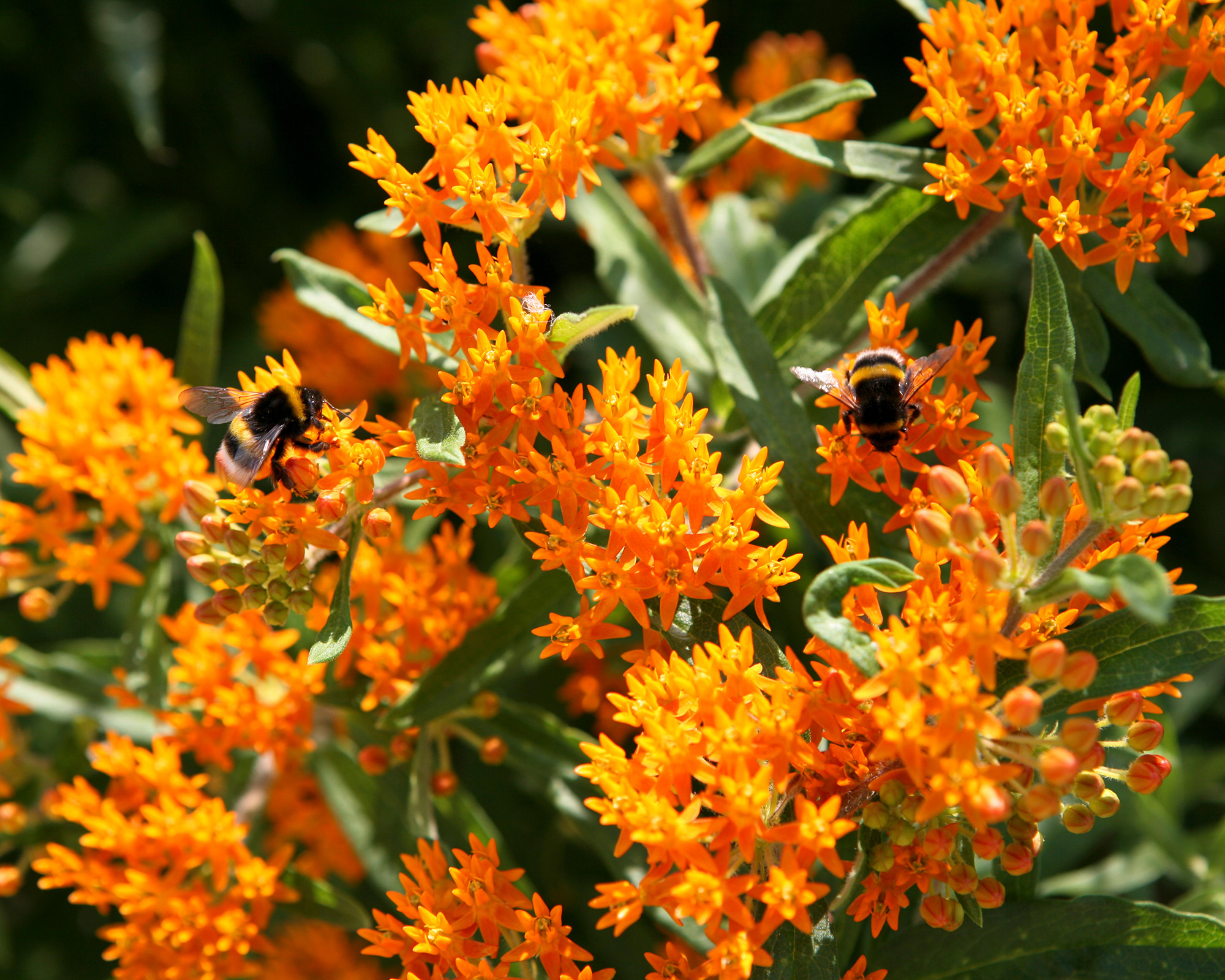
Bees will also flock to your milkweed plants
When and where to plant milkweed
Plant milkweed in spring when the soil is warming up, or in early fall while soil is still warm and moist.
Before planting milkweed, discover the size and habit of the species you want to grow. Some will make tall stems and others, like common milkweed spread underground and might not be suitable to let loose in small plots.
Consider restricting root run by giving common milkweed its own bed. Grow it in garden planters plunged in the ground or using the rhizome barriers designed to keep bamboo under control. If there is too much self-seeding, remove the pods as they form.
Extolling The Fall Garden writer Tovah Martin observes that this ‘is when the milkweeds so important for monarchs are at prime. Most milkweeds are best left in the meadow, but bright orange Asclepias tuberosa and pink Asclepias incarnata are perfectly well behaved in the garden.’
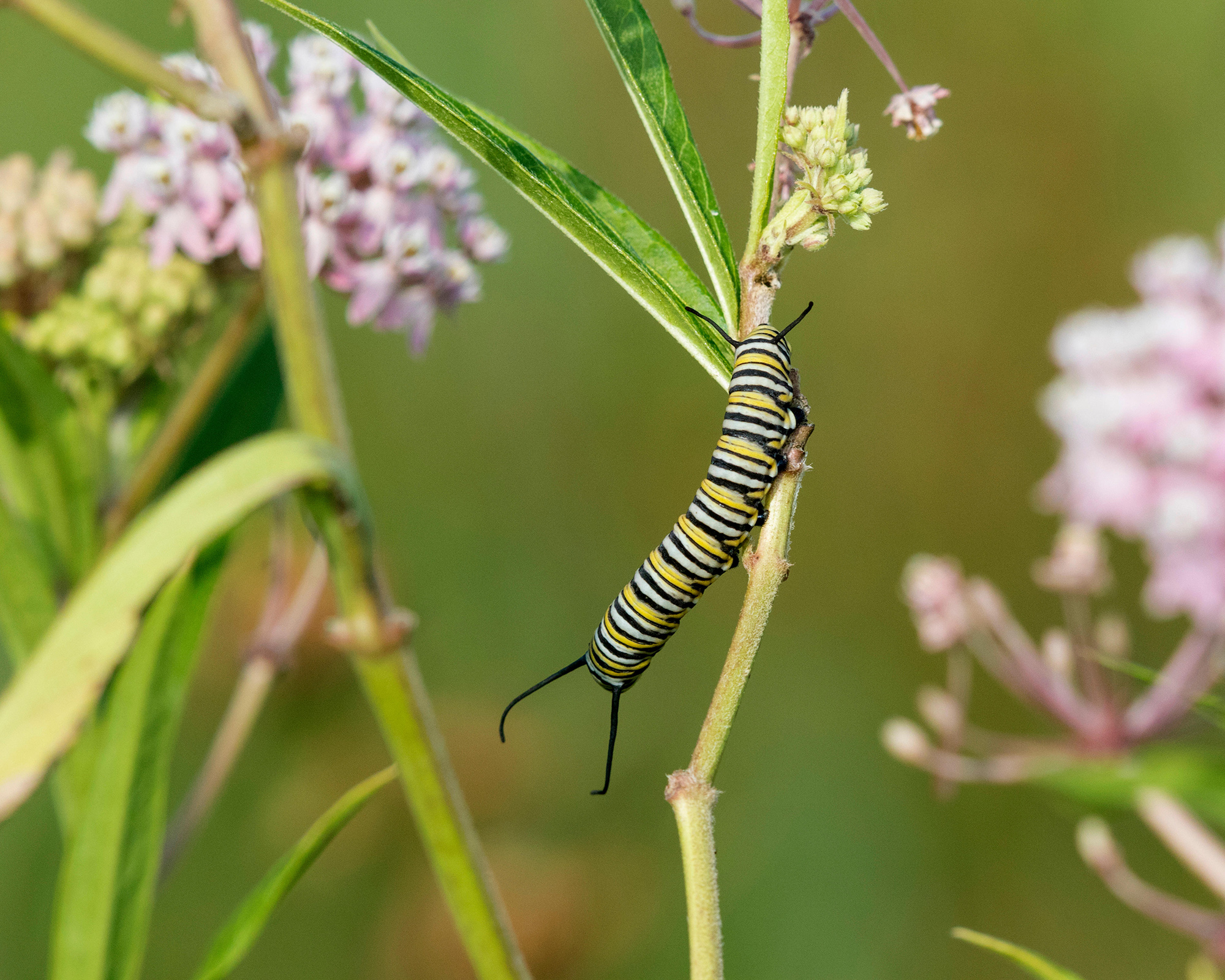
Monarch caterpillars and butterflies will like native species of milkweeds
Though milkweed is the ideal plant for wildlife gardens, in areas of Canada and the USA where monarch butterflies live, breed and migrate there is a strong argument for avoiding the more exotic milkweeds not native to these areas.
Some (notably A.curassivica) have lengthy flowering periods that can delay and disrupt the normal migratory habits of Monarch butterflies, by encouraging them to stay and breed for longer than usual in the fall. A good plan is to check with your local conservation office.
Where this is not an issue, the wide range of milkweed species and cultivars with their jewel-like flowers make worthy contenders for borders, container gardening and glasshouse displays. They are very collectable, and make a good option as a plant for pollinators.
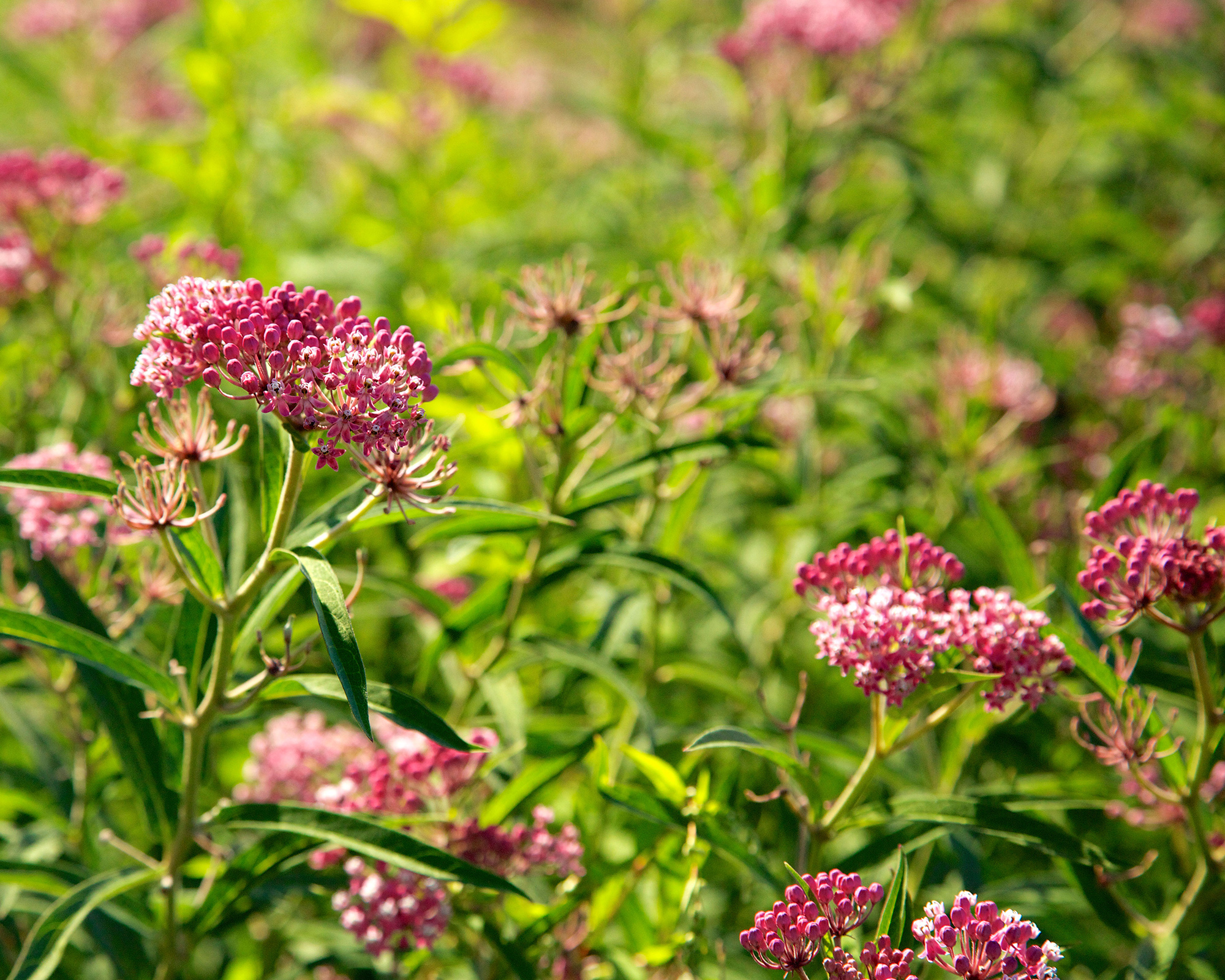
Check that you are not growing an invasive species in your area before you plant milkweed
How to grow milkweed in pots
With the right techniques, almost any plant can be grown in a pot and milkweeds are no exception. The biggest mistake when learning how to grow milkweed as a container plant, is to place a tiny seedling into a massive pot where it will flounder in a mass of damp compost.
Seed-raised plants are best moved gradually from small 3-4in (9cm) pots to containers 8in (20cm) wide, and finally to a 12in (30cm) pot (or several in larger half barrels). Choose pots with adequate drainage holes and use a good-quality potting compost.
Check the packet to see when your potting compost will run out of plant food, and add slow release fertilizer to compensate, repeating in spring.
Plants in containers are more vulnerable to summer heat and winter cold, so consider light shade to protect plants from heat in summer, and then protect plants from frost in winter by insulating the pot sides or moving them under cover.
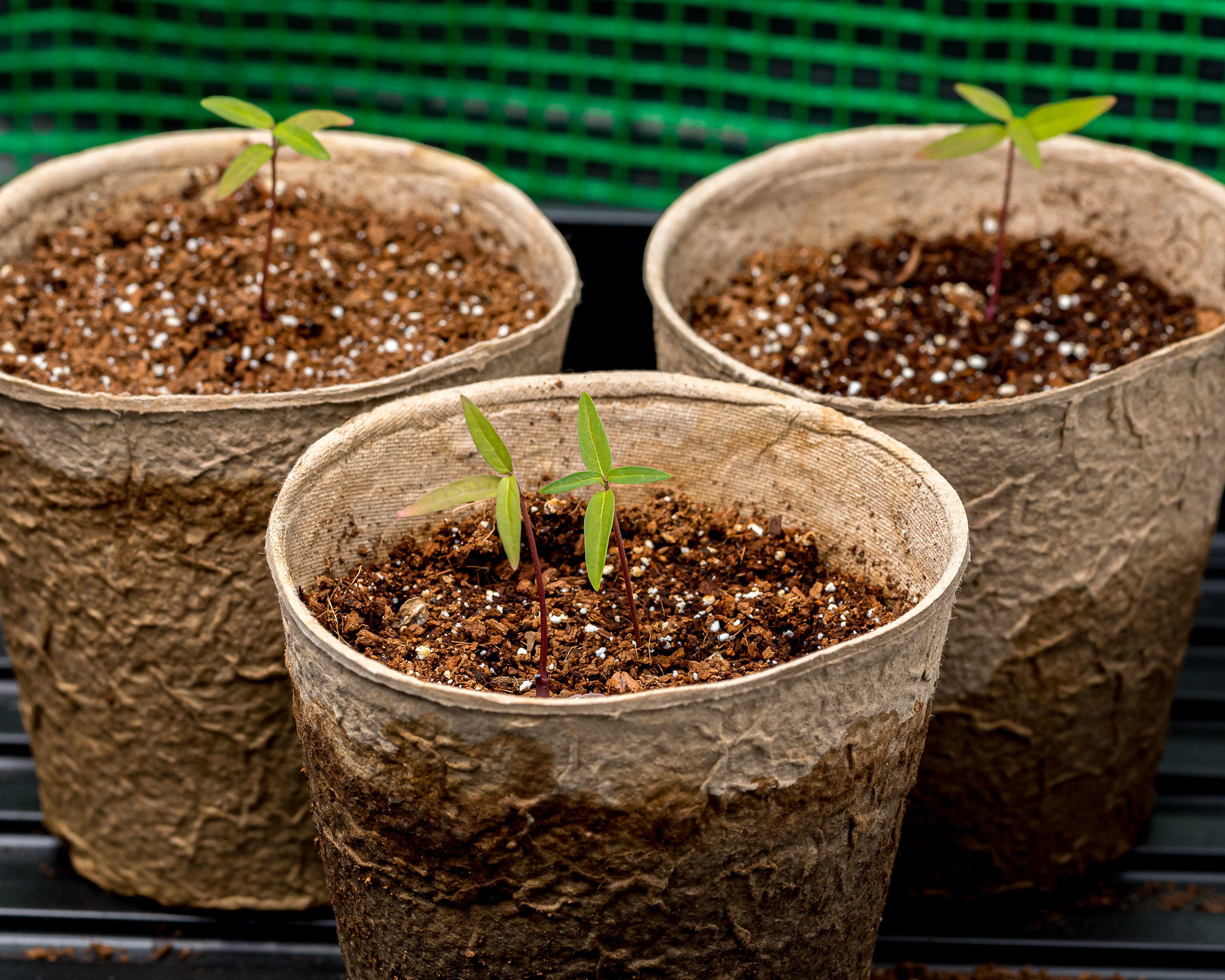
Seedlings should be started off in small pots and gradually upsized as they grow
How to grow milkweed seeds outdoors
The seeds of most non-tropical milkweeds require stratification, which means the normal exposure a seed would get to the cold, damp conditions of winter. This is easily achieved by sowing fresh but ripe seed in the fall.
You can grow flowers from seed and sow direct to the soil and sometimes be lucky with germination, but I prefer to set seeds into pans (wide, shallow pots), or modules. These are left outside, or in areas of heavy winter rainfall, under unheated glass and should germinate in spring. I would divide seed acquired in spring into two batches.
Sow some immediately (as below). Soak the second batch overnight, and then put them in a clear plastic bag filled with 50:50 moist, composted bark and vermiculite. Seal and place in the refrigerator below 40˚F (5˚C) for one month before sowing.
- Fill a set of modules with cells 2in (5cm) square with a good, moist seed compost.
- Plant two to three seeds per module, burying them by their own size with compost.
- For winter, sprinkle a fine layer of sharp sand or grit over the surface to prevent rain splash.
- Water in using a fine rose (sprinkler) on the can so as not to wash the seed about.
- Place fall sowings in a sheltered spot outdoors or under an unheated greenhouse where they will be protected from disturbance or undue wet.
- Pot the seedlings separately and when they have filled 4in (10cm) pots, plant out 6-24in (15-60cm) apart (depending on type) in groups. Those germinated in situ should be thinned gradually to similar spacings.
Simple milkweed care tips
The many species of milkweeds grow in a wide range of habitats. To enjoy watching them thrive, and for the benefit of local wildlife, the best plan is to choose local species which are evolved to suit the soil and climate of your garden.
Most milkweeds need full sun to flower well, and are happy to thrive in average soil types.
They rarely need feeding but like most plants, benefit from a mulching of soil conditioner such as well-rotted garden compost, spread when the soil is moist. These plants take their time to wake up in spring, so don’t worry if they are slow to show.
I would leave their dead tops on for the winter to benefit wildlife, insulate the crowns and for winter outlines, before shearing back in spring ahead of new growth. With milkweed that are slightly tender, in colder regions, insulate the crowns and roots with a dry mulch of shredded bark.
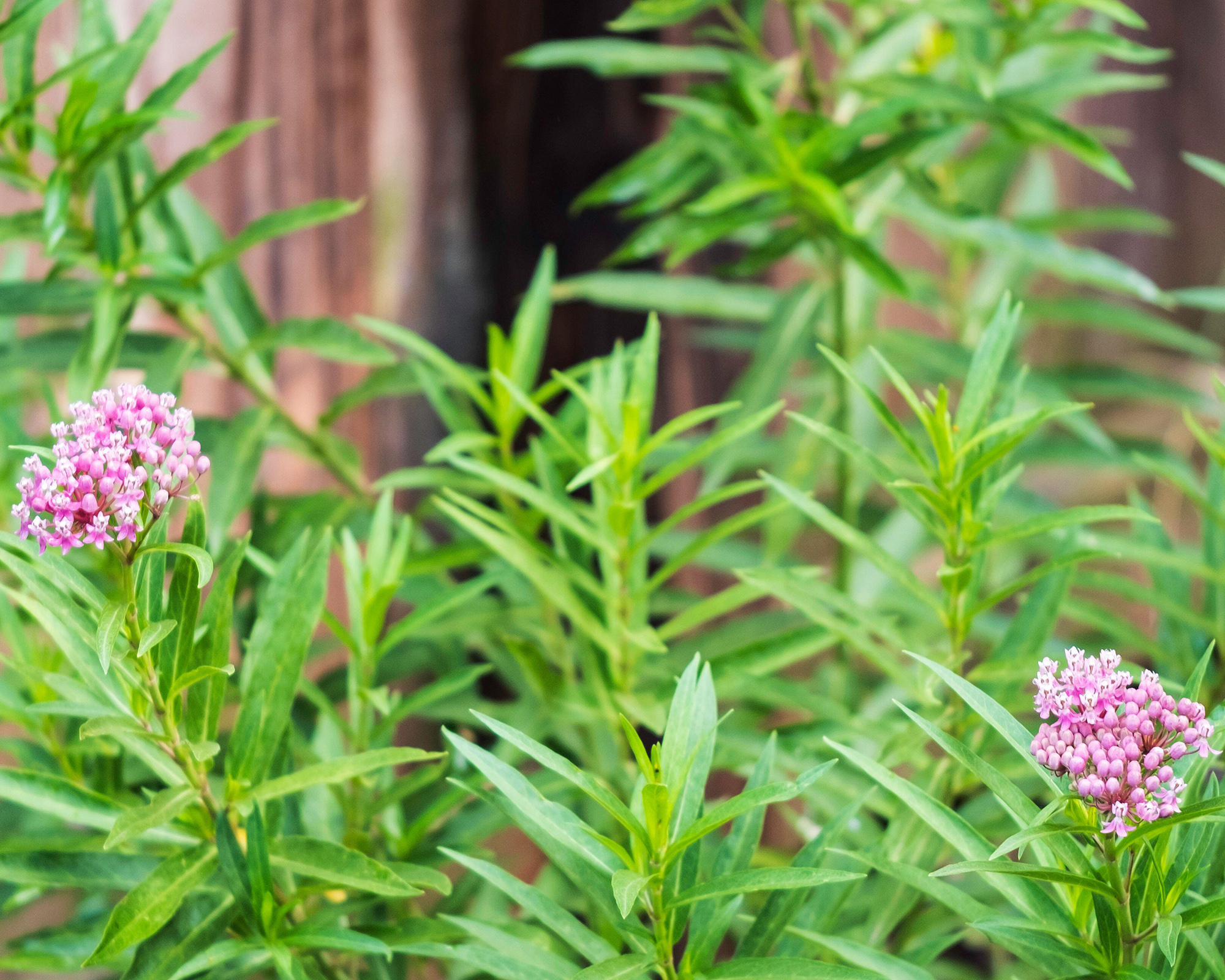
Swamp milkweed's blooms will give off a vanilla scent, from the start of summer to the very close
Growing milkweed from cuttings
As with most herbaceous perennials you can take cuttings from plants, and milkweeds are easy to root from basal cuttings taken from new spring growth.
These are going to exude sap, so wear gardening gloves and insert them speedily into a 50:50 mix of general purpose plant compost and grit or vermiculite.
- Trim the cuttings so they are 3in (8cm) long and remove lower leaves. If remaining leaves are over long, cut them in half.
- Insert grid fashion 2in (5cm) apart in all directions into a seed tray, or insert several around the outside of a 3.5in (9cm) pot.
- Water in and cover with a clear plastic lid, or cover with ventilated polythene.
- Place out of full sun so the cuttings will not wilt while rooting.
- When they have rooted you will see them begin to grow. Pot each cutting separately to grow on and then plant them out.
- Should you want your young plants to branch, nip out the shoot tips after they have settled in to their pots.
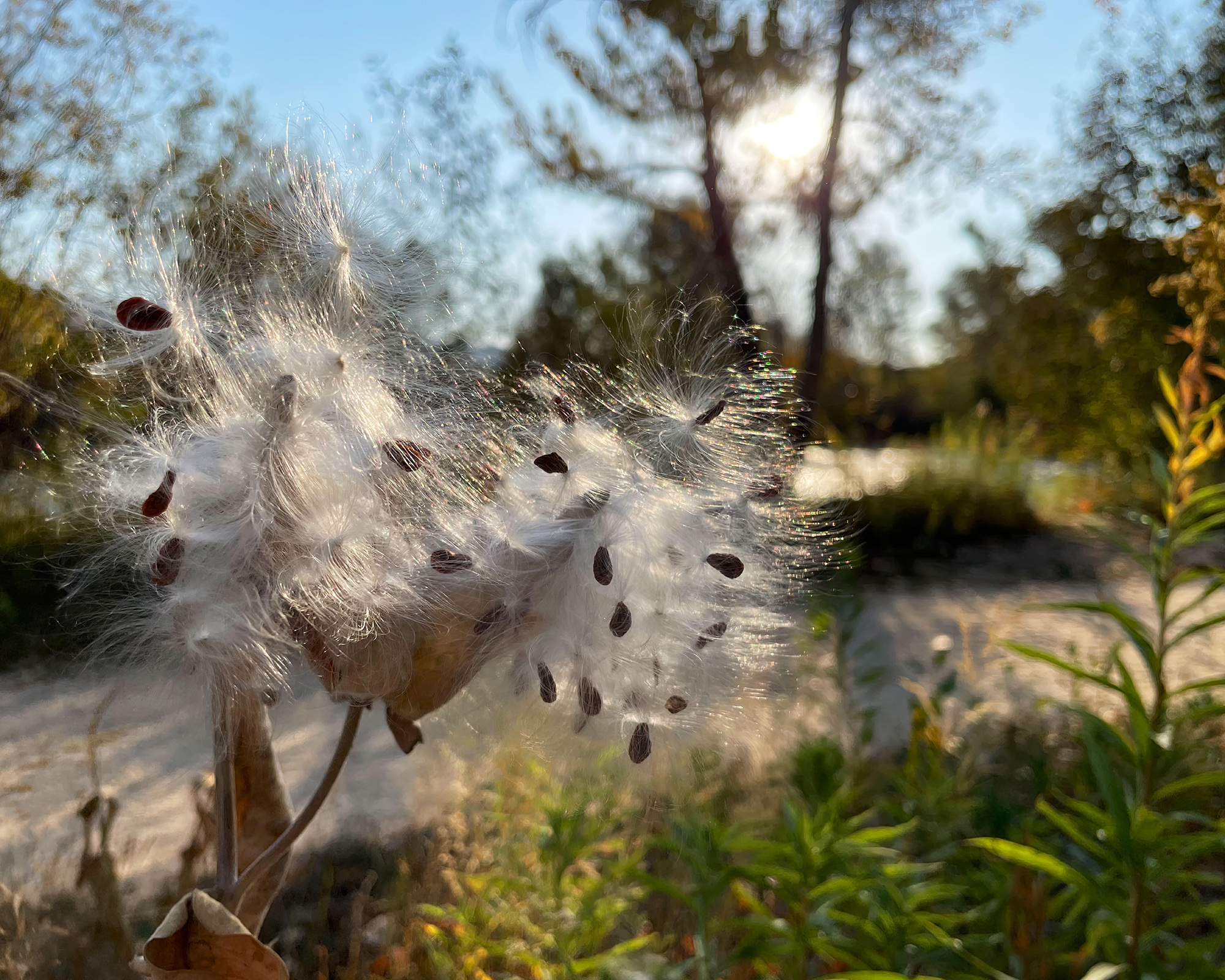
Common milkweed seed will disperse itself via wind
Common milkweed problems and how to solve them
Aphids will attack milkweeds, but rather than get rid of aphids it is generally best to leave them for nature to deal with. Any attempts to squash or blast them with water could damage the eggs or larvae of butterflies.
Dapper orange and black beetles may feed on milkweed seeds but there are usually plenty left. The hairy caterpillars of tussock moths sometimes defoliate plants but rarely kill them off.
Of concern is milkweed yellows, caused by phytoplasma (a bacteria-like infection) most likely spread by leafhoppers. Young foliage turns distorted and yellow. It is best to pull up and dispose of plants showing symptoms.
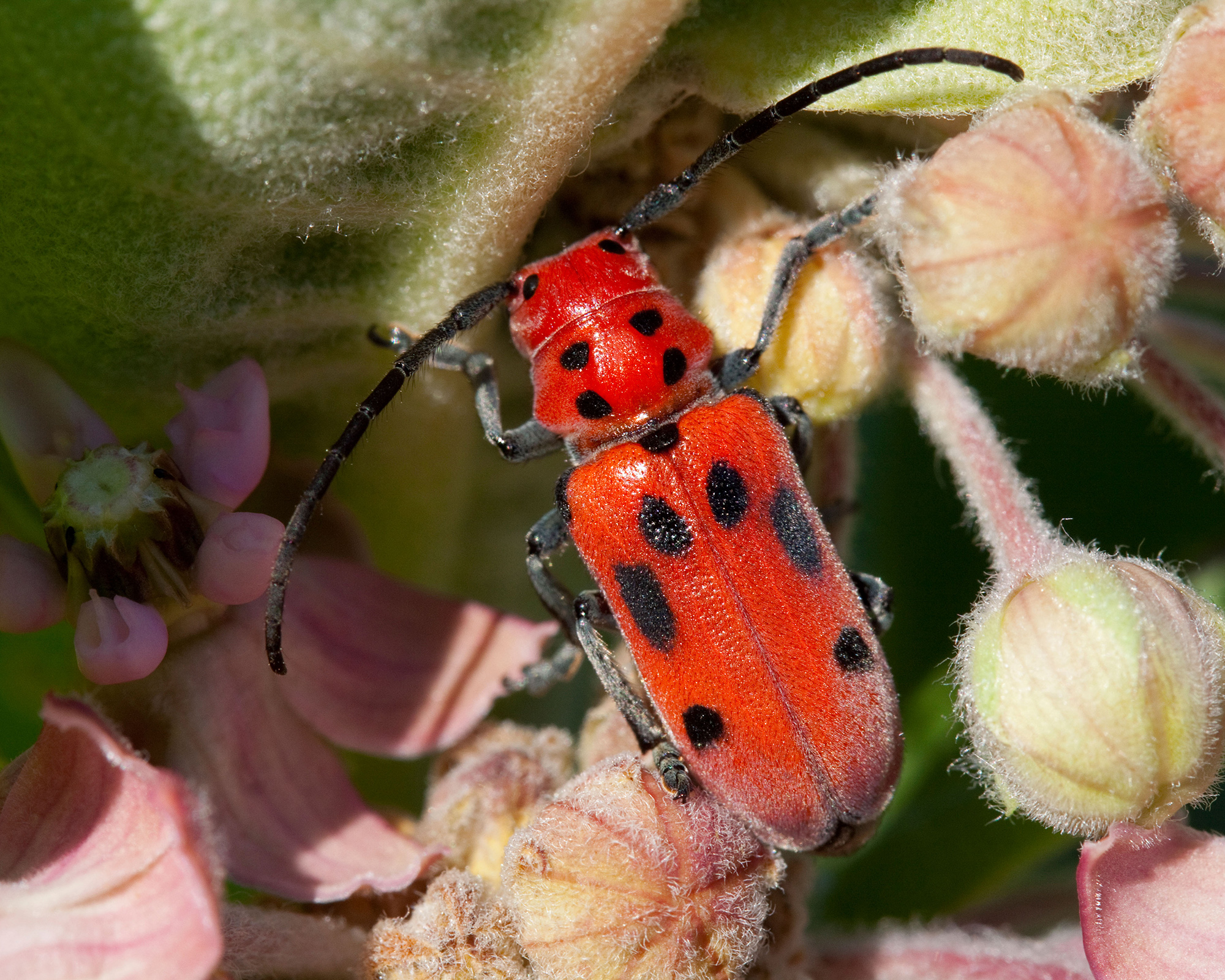
The milkweed beetle will feed on seeds but leave plenty
Can I divide milkweeds?
Clump-forming species like the swamp milkweed are easily divided by lifting plants and cutting between crowns of growth in spring or fall. Common milkweed grows from rhizomes and is propagated in the same way as mint.
Lift a plant, or even just the edge of a plant in spring or fall, locate the horizontal travelling underground stems and cut away portions that have shoots and roots attached. Plant in a pot or into the ground elsewhere to start a new colony.
Butterfly weed does not divide well because the plants produce deep tap roots, so propagate by seed or cuttings instead.
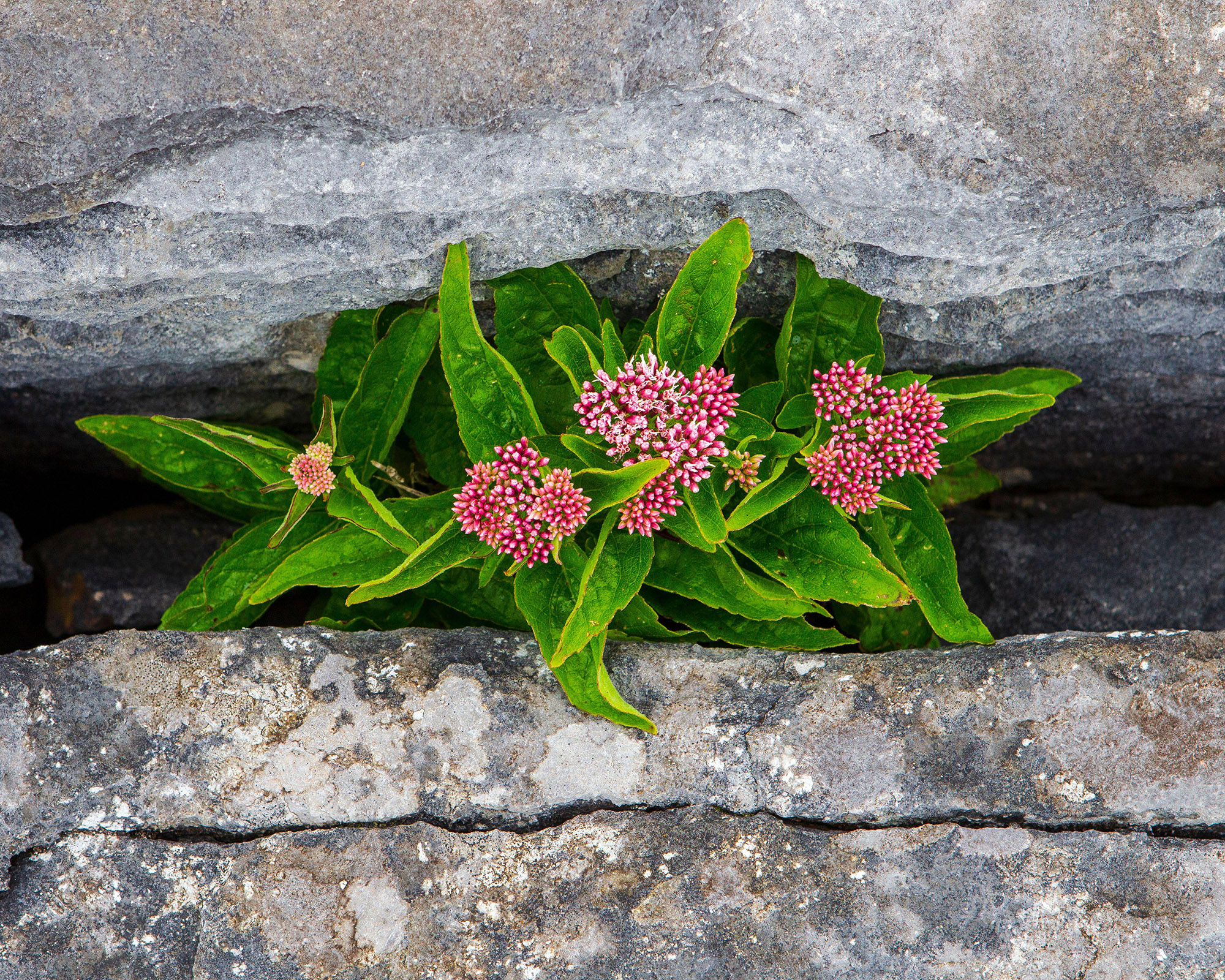
Swamp milkweed
Is milkweed sap poisonous?
The milky latex sap is toxic to humans and pets and can act as an irritant, particularly to eyes. Wear gloves when snipping these cutting garden flowers for vases, pruning back or taking cuttings. And make sure you follow our tips on how to clean pruning shears after use too.
Yet these plants were named by Carl Linnaeus, after the Greek God of healing, and the indigenous people of the Americas used the sap as a cure for dysentery and warts.
In her book Flowers of the World, the late Frances Perry tells us that ‘the seed pods of Asclepias tuberosa were boiled and consumed with buffalo meat; the roots were boiled and eaten as were the tender young shoots, while the latex of other species has been recommended as a substitute for rubber in times of emergency’.
The fine fluffy hairs attached to milkweed seeds have been used to stuff pillows and mattresses.
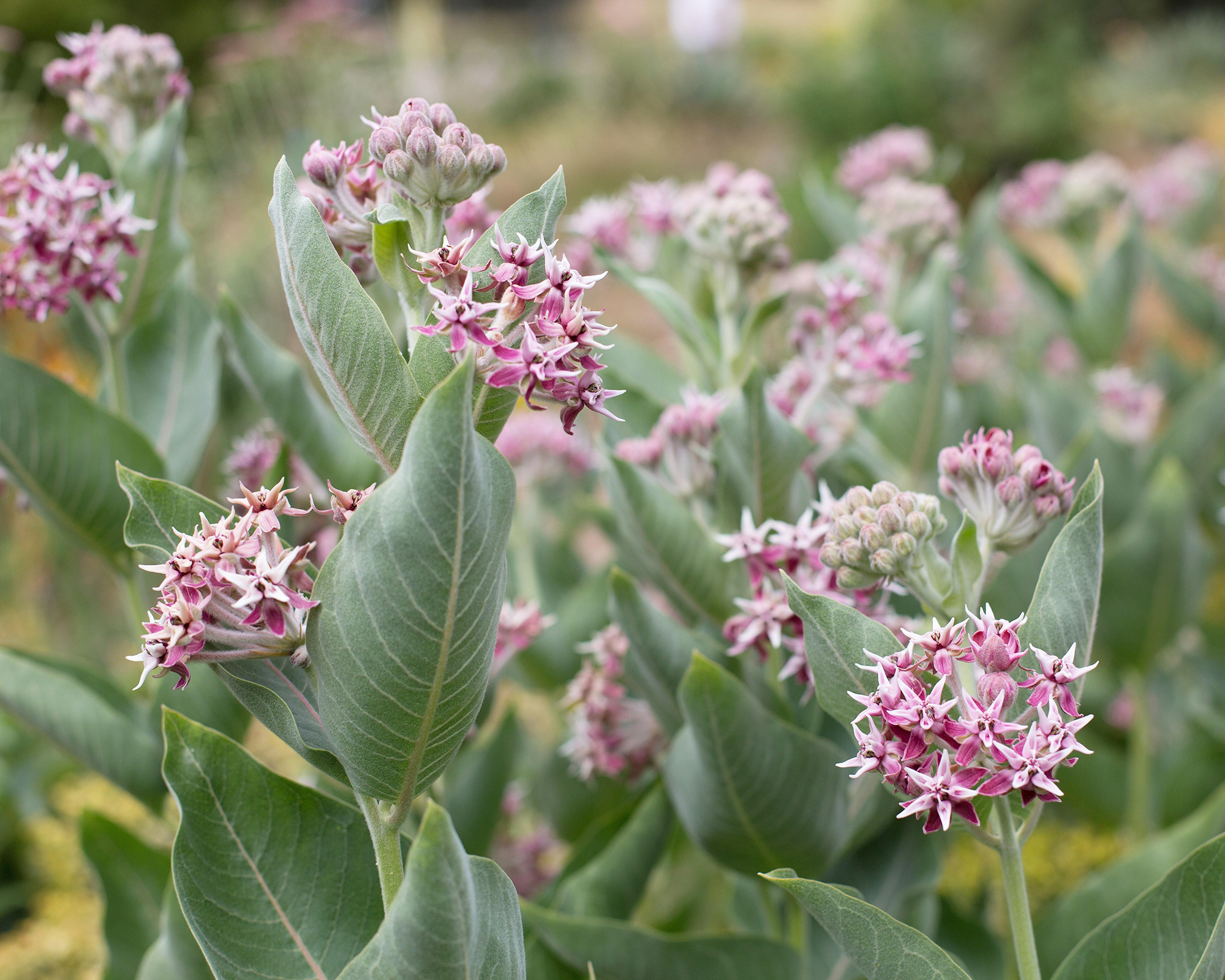
Asclepias speciosa is also known as 'Showy Milkweed'
What is the link between milkweeds and Monarch butterflies?
Monarch butterfly caterpillars eat only milkweed and cannot survive without it. Eggs laid on leaf undersides hatch into handsome caterpillars of white with bands of citrusy yellow and black.
By eating the milkweed, these caterpillars become toxic to predators and in return the adult butterflies are important pollinators of the milkweed flowers. Hatching from glassy-looking jade-green cocoons, most adult butterflies live for around four weeks and complete legs of a complicated migration journey. But every fourth generation (a super generation) can stay alive for six to eight months.
Those from the eastern side of the USA take a migratory flight south to Mexico where they roost for winter in a relatively small forested area, alighting on trees in their masses. Those from the western side of the USA overwinter in California.
In spring they mate, lay eggs, hatch and return north along nectar corridors, breeding along the way. The Monarch butterfly is in decline due to loss of habitat for both butterflies and the milkweeds they rely on. This has triggered a huge interest in people learning how to grow a butterfly garden to act as nectar stations and breeding grounds for these incredible insects.
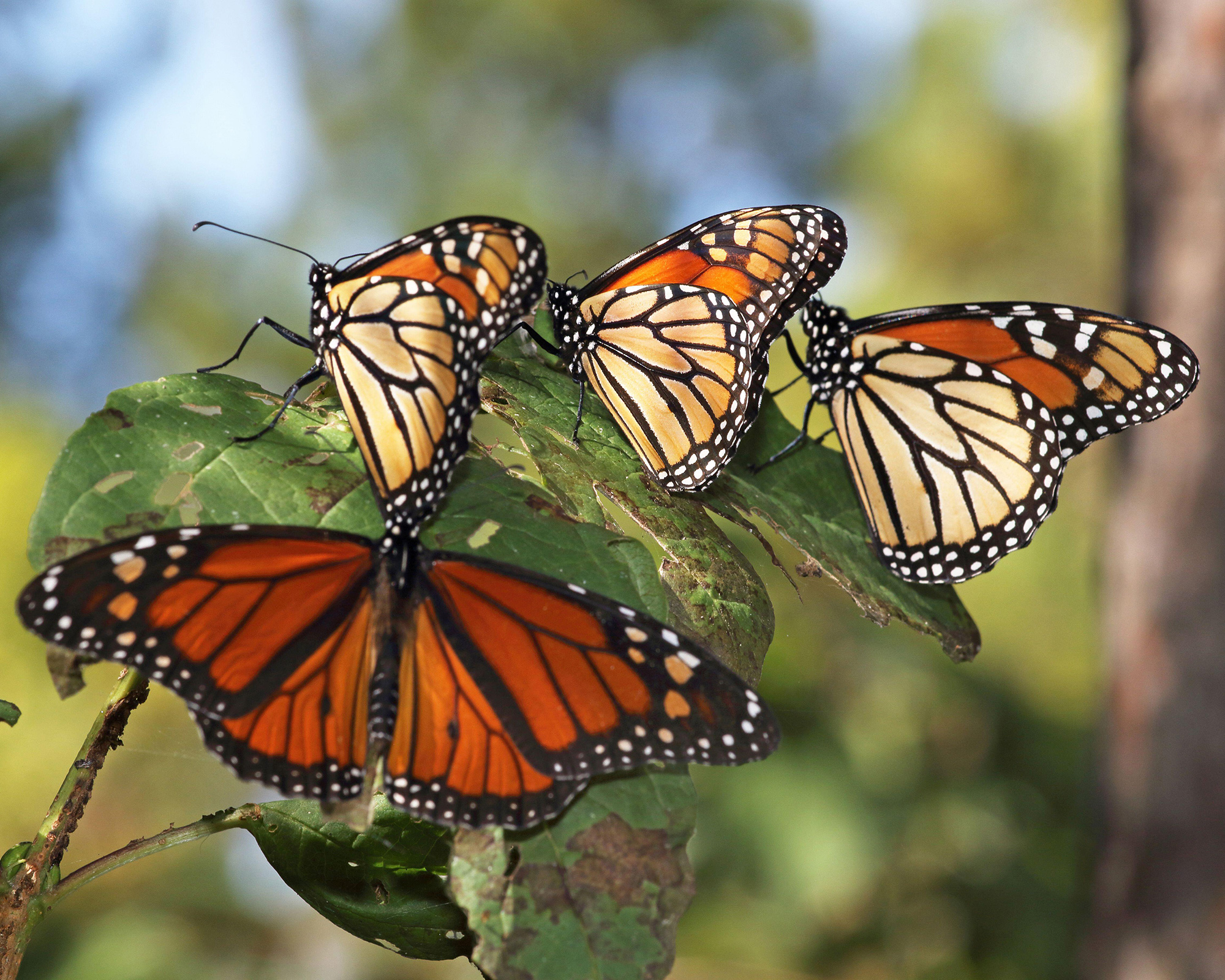
Monarch butterflies are important pollinators for milkweed flowers
Where to buy milkweed
To start learning how to grow milkweed you'll want to pick up some quality varieties which are ideal for your local habitat.
Shop milkweed varieties in the US:
- Shop for milkweeds at Amazon
- Shop for milkweeds at American Meadows
- Shop for milkweeds at Burpee
- Shop for milkweeds at Fedco Seeds
- Shop for milkweeds at Gardens of the Blueridge
- Shop for milkweeds at High Country Gardens
Shop for milkweed varieties in the UK:

Having trained at Kew Gardens in London, worked in parks department nurseries and as Glasshouse Supervisor at RHS Wisley, Anne has been a freelance horticulturist since 1986. Anne writes for Amateur Gardening and has been a regular panelist on BBC Radio 4’s Gardeners’ Question Time for 27 years. A large plot full of wildlife habitats, edible and ornamental plants is Anne’s workshop and inspiration.
